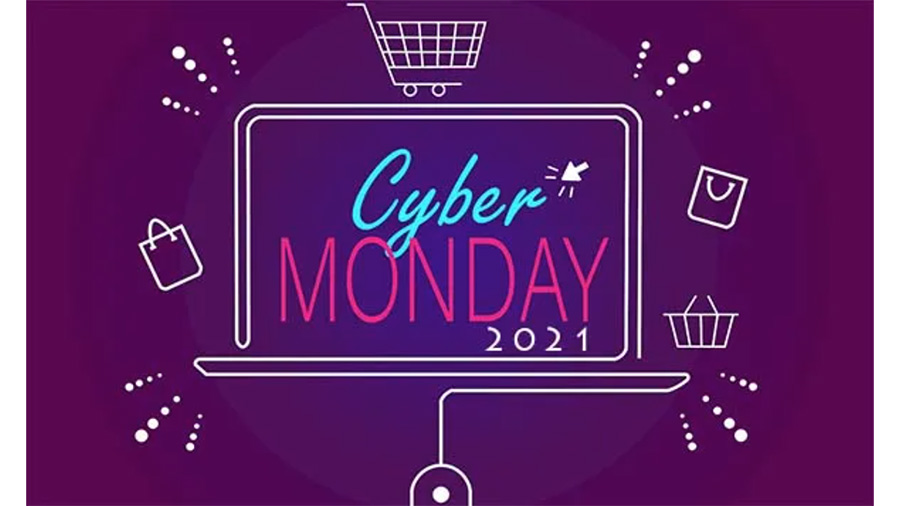According to data released by Adobe Analytics, consumers spent a total of $10.7 billion on Cyber Monday, which is down 1.4 percent year-over-year; this marks the first time Cyber Monday has shown a decline in sales since Adobe began tracking the figure in 2012.
Adobe analyzes more than one trillion visits to retailer websites and said that although it is about $100 million shy of what shoppers spent last year ($10.8B), it remains the biggest online shopping day of the year. In the peak hour (11:00 pm-12:00 am ET / 8:00 pm-9:00 pm PT), consumers spent $12 million every minute.
Cyber Week (from Thanksgiving Day through Cyber Monday) has now driven a total of $33.9 billion in online spending, down 1.4 percent year-over-year, as online spending on Black Friday dipped 1.3 percent year-over-year at $8.9 billion versus $9 billion (2020), and Thanksgiving Day stayed flat at $5.1 billion.
“With early deals in October, consumers were not waiting around for discounts on big shopping days like Cyber Monday and Black Friday,” said Taylor Schreiner, director, Adobe Digital Insights. “This was further fueled by growing awareness of supply chain challenges and product availability. It spread out e-commerce spending across the months of October and November, putting us on track for a season that still will break online shopping records.”
Season to date, November 1 to November 29, consumers have spent $109.8B online, growing at 11.9 percent over last year, which means that 22 days exceeded $3B in online spending, a new milestone. In 2020, only nine days topped $3B at this point. The season has smoothed out, with e-commerce becoming a more ubiquitous daily activity. Adobe expects the full season, November 1 to December 31, to hit $207B at 10 percent year-over-year growth. A new record.
On Cyber Monday, online spending was driven by categories including toys (sales were up nearly 11x pre-season levels in September 2021), gift cards (up by 7x), books (up by 7x), video games (up by 6x), and baby/toddler products (up by 6x). In the appliance category (up by 5.6x overall), microwave ovens and small kitchen appliances topped the list (up by 9.6x and 7.1x, respectively).
Additional Insights:
- Top sellers on Cyber Monday
- Toys: Hot Wheels, Nerfs, Baby Alive, Paw Patrol, Squeaker, and Tamagotchi Pix
- Video Games: Just Dance 2022, Mario Party Superstars, Spider-Man: Miles Morales, FIFA 22, Metroid Dread
- Electronics: AirPods, Apple Watches, Apple Pencils, laptops (HP, Lenovo and Dell), Nintendo Switch and Switch Lite, Xbox Series S, Oculus Quest 2, TVs (Sony and Samsung)
- Shopping carts get larger
- Consumers have seen the final price point of their shopping carts jump 13.9 percent on Cyber Monday (up 19 percent in the season overall), indicating that some are buying bigger ticket items, such as furniture, while others are feeling the effects of online inflation (e-commerce prices have been up for 17 consecutive months).
- Discounts remain weak
- On Cyber Monday, discount levels for electronics were at -12 percent (versus-27 percent last year), TVs at -13 percent (versus -18 percent last year), apparel at -18 percent (versus -20 percent last year), sporting goods at -8 percent (versus –20 percent last year), appliances at -8 percent (versus -20 percent last year).
- For shoppers looking to buy a new computer, the day with the deepest discounts is expected to be this Wednesday (December 1) with discount levels at -26 percent. Adobe expects that starting today, discounts will generally begin to fade (in the 5 percent to 10 percent range) as shipping costs begin to rise.
- Out-of-stock remain high
- On Cyber Monday, the prevalence of out-of-stock messages was up 8 percent compared to the week prior (November 22). In November 2021 so far through November 29, the prevalence of out-of-stock messages is up 169 percent versus pre-pandemic levels (January 2020) and up 258 percent versus two holiday seasons prior (November 2019). Adobe expects this to persist through December.
- Buy Now Pay Later (BNPL) sees an uptick
- On Cyber Monday, usage of BNPL services saw a bump with revenue up 21 percent year-over-year and orders up one percent year-over-year. It is the exception, and the first time this season where usage had not slowed. But with the biggest online shopping day behind us, Adobe does not expect another surge in BNPL usage until closer to Christmas.
- Curbside pickup maintains popularity:
- As online shopping picked up, consumers used curbside pickup for 18 percent of all online orders placed on Cyber Monday (for retailers that offer the service), versus 20 percent last year. The durable demand for curbside pickup continues to show the value of physical stores.
- Mobile shopping hits a wall
- On Cyber Monday, smartphones accounted for 39.7 percent of online sales (versus desktop), up 8.4 percent year-over-year. With consumers working from home, smartphones have lost potential as a major shopping channel. For years, the trajectory showed that mobile was on course to surpass the 50 percent mark in the share of online sales, which has since been derailed. Consumers are using phones to browse instead (57 percent share of web visits).
Illustration courtesy Makeoverarena














